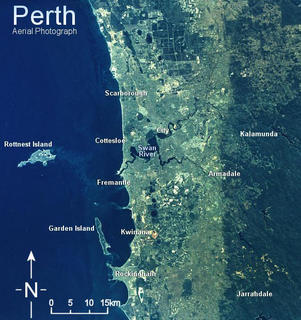Space is the place part 2.
Don’t look down, the sky is about to explode.

Western Australia’s obsession with the sky and outer space would continue. What began with John Glenn and John Glenn had entered the psyche of the sandgropers.
On 14th May 1973 the US launched the first of many Skylab missions. The 80 ton prototype space station was meant to survive until the mid 80s when it would be serviced and upgraded by the then nascent shuttle program. However, damage during launching when the micrometeoroid shield deployed too soon and ripped off a wing and solar panel meant that from the outset, the functionality of Skylab I would be limited. Despite the set back, several manned missions to Skylab were completed successfully, before the safety and potential of the station became prohibitive.
On July 11 1979 Skylab was allowed to plunge to earth, ending days of speculation as to its final destination: Skylab I came down in blaze of glory and a sonic boom over the Indian Ocean and Western Australia. It is almost as if Skylab I had answered the beacons of the City of Light and come home like a prodigal son. Debris was recorded near Kalgoorlie east of Perth and down in Esperance on the south coast. Treasure hunters still look for pieces of the space station in the desert and fields; local councils still advertise their shire to tourists as the final resting place of the lost space station and, like the assassination of JFK or 9/11, the local people still remember where they were when the chariot of fire crossed down from the milky way and fell to earth.

Similar scenes were recorded again in 1986 when Halley’s comet made a return after 76 years in orbit. Street curbs were packed and sales of telescopes and Hills hoists went through the roof.
Not surprisingly, a formal culture of space worship has developed in Western Australia and is celebrated every year on January 26 for at least the last 20 years. On this day, thousands of people flock to the banks of the Swan River around the city centre for what is known locally as ‘Sky Show night’. In honour of John Glenn, John Glenn, Halley’s comet and Skylab the people of Perth drink beer, eat what we call in Spain salchichas or butifarras in Catalonia, but known locally as snaggers or sausages, set off fire works and shine torches into the sky. According to the Ozsurvey, it is the most significant event of the calendar.


Why? Why make beacons for a lonely astronaut in 1962? Why worship comets and outer space?
Boredom and desperation is one answer, but is far too condescending
 an explanation. In terms of psyche it is an easy question. Western Australia is full of empty space, so it is easy to relate to the great black void that awaits beyond the atmosphere. Being the last physical frontier of the known world, the nearest neighbour to Western Australia is outer space, an even more unknown arena. When you consider that space is 100km or 62miles away it makes it very proximal when considering the relativity of distance of the vast state. The suburb of Joondalup in the north of Perth is 100km from Mandurah in the south, making it as close to outer space as it is to the other side of the city, let alone the rest of the country. It suggests a visitor from outer space is more likely than a visitor from Mandurah. It is not surprising then, to find that 4 out of 5 Western Australians believe in aliens, a higher number than those who believe in the existence of other Australians. Sky Show is thus a worship of isolation and an investment of hope in the future that the cosmos may bring contact with other life.
an explanation. In terms of psyche it is an easy question. Western Australia is full of empty space, so it is easy to relate to the great black void that awaits beyond the atmosphere. Being the last physical frontier of the known world, the nearest neighbour to Western Australia is outer space, an even more unknown arena. When you consider that space is 100km or 62miles away it makes it very proximal when considering the relativity of distance of the vast state. The suburb of Joondalup in the north of Perth is 100km from Mandurah in the south, making it as close to outer space as it is to the other side of the city, let alone the rest of the country. It suggests a visitor from outer space is more likely than a visitor from Mandurah. It is not surprising then, to find that 4 out of 5 Western Australians believe in aliens, a higher number than those who believe in the existence of other Australians. Sky Show is thus a worship of isolation and an investment of hope in the future that the cosmos may bring contact with other life.

0 Comments:
Post a Comment
<< Home